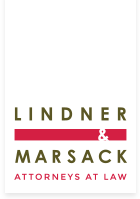The Affordable Care Act (“ACA”) requires a “large employer” (50 or more full time equivalent employees) to provide health plan coverage to “full time” employees (30 or more hours per week) within 90 days of hire. On June 25, 2014, IRS, DOL, and HHS published final regulations which allow an employee orientation period of up to 30 days to precede that 90-day waiting period.
Specifically, the final regulations provide that being otherwise eligible to enroll in a plan means having met the plan’s substantive eligibility conditions (for example, being in an eligible job classification, achieving job-related licensure requirements specified in the plan’s terms, or satisfying a reasonable and bona fide employment-based orientation period). Under the final regulations, after an individual is determined to be otherwise eligible for coverage under the terms of the plan, any waiting period may not extend beyond 90 days, and all calendar days are counted beginning on the enrollment date, including weekends and holidays.
IRS, 26 CFR Part 54, Reg-122706-12, RIN 1545-BL97, p. 6; DOL EBSA, 29 CFR Part 2590, RIN 1210-AB61; HHS 45 CFR Part 147, RIN 0938-AR77.
Saying that, “the Departments do not intend to call into question the reasonableness of short, bona fide orientation periods,” the Regulation adds that, for fear of abuse, they will apply a “clear maximum” to prevent “mere subterfuge for the passage of time.” If an orientation period for training and evaluation is “longer than one month that precedes a waiting period, the Departments refer back to the general rule, which provides that the 90-day period begins after an individual is otherwise eligible to enroll under the terms of a group health plan.” Id., pp. 6-7.
Two definitional elements should be noted:
- “[O]ne month would be determined by adding one calendar month and subtracting one calendar day, measured from an employee’s start date in a position that is otherwise eligible for coverage.” Id.
- This rule applies to plan years beginning on or after January 1, 2015. Until then, the proposed regulations will be considered in effect. Under the proposed regulations, an orientation period would be allowed if it “did not exceed one month and the maximum 90-day waiting period would begin on the first day after the orientation period.” Id., p. 5. The final version is not considered to be a “substantive change.”
The concern with possible abuse or misuse of this new rule has led to a “bright line” test which simply counts the relevant days with no attention to the details of job requirements and how the employer determines within 30 days whether the new employee can satisfy them.
If you have any questions about this new regulation, please contact Alan Levy, the Lindner & Marsack attorney who focuses on employee benefits.
